Digital Image Creation Using AI Risks Copyright Infringement
September 16, 2024
By: Brian T. Moriarty, Timothy J. Meagher, and Daniel A. Fleisher
Bloomberg Law
Illustration: Ron Cortez/Bloomberg Law
Generative artificial intelligence has radically transformed the world of digital images. Anyone seeking to make a website, a video, or any other visual media can quickly use an AI program to convert their ideas into a new image with help from a few text prompts.
The image maker can do so at low cost and without the need to hire a digital artist to create the image. Copyright protection may not be available for the new creation (because a computer and not a human created the image). But the image maker may mistakenly believe that the final AI creation doesn’t infringe others’ copyrights because it’s a new image. This isn’t the case.
In Andersen v. Stability AI, the US District Court for the Northern District of California recently considered the relationship between copyright laws and AI images, clarifying that both companies producing AI programs and end users can be held liable for copyright infringement based on a newly created AI image.
The court noted that to bring suit, the image owner must register the image with the US Copyright Office. It also noted that AI programs sometimes don’t create brand new images, but instead produce an image from the training set. End users of the AI programs “are capable of making very similar if not identical works to at least some training images.” This similarity might result in liability for copyright infringement.
Generative AI image systems start with massive data scraping of public images. AI models are then applied to machine learn the features of the collected images, known as the training set. The end user can prompt the system with text to request an image. The AI image will be accorded no proprietary rights because it was created by a computer not a person.
For example, an end user seeking an image of Marilyn Monroe in the style of Andy Warhol’s work, might get a copy of a Warhol copyrighted work. This AI-generated image would likely be an infringement of another’s copyright.
To avoid copyright infringement, an end user should conduct a copyright search to determine if their AI-generated image is similar to another’s image. It’s likely that most of the images in the training set aren’t yet registered with the Copyright Office, but that doesn’t mean the images can’t be registered in the future. Therefore, the end user should also review existing images that haven’t yet been registered.
A comprehensive copyright search allows a user to determine if their new AI image might infringe others’ rights. The user should err on the side of caution and avoid using potentially similar images or seek a license. But even if the search reveals that there are no substantially similar images, the end user shouldn’t consider the matter concluded.
Given the vast expanse of public images online and elsewhere, it’s always possible that a search missed an image that might be similar to the AI creation.
The undiscovered image might be the basis for a copyright infringement claim. But all is not lost. The end user’s searches will still be valuable to show that they did not intentionally infringe others’ rights but is an innocent infringer.
The innocent infringer defense of the Copyright Act applies when the infringer proves it was “not aware and had no reason to believe that his or her acts constituted an infringement of copyright.” Then the court in its discretion may reduce statutory damages (not actual damages) “to a sum of not less than $200.”
The defense doesn’t excuse the infringement, it just lowers damages. To qualify as an innocent infringer, the image maker needs to conduct a credible search before they can use an AI image.
Conducting a search of Copyright Office records is also not easy. Its database of images isn’t well-organized and is barely searchable. The database doesn’t include the actual images copyrighted. It only supplies the name of the work and registrant.
There are several alternatives to commissioning a commercial or Copyright Office search.
First, the obvious. Search the AI training set for images likely to be a source of the AI image. Review those images for basic information, such as title, copyright notices, author credit, and ownership information. Contact the owner and ask if the work is copyrighted or seek a license to use the image. Major image libraries often offer image licenses for a reasonable fee. If the image title is known, search the Copyright Office database for ownership information.
Second, context. If the AI image is similar to a well-known work, such as a figure from a movie or a cartoon, an end user shouldn’t use such an image, as it almost certainly will be a copyrighted image owned by a company that regularly searches for infringers.
Third, Google it. The AI image creator should conduct a Google or other search—typically a “reverse image” search—to try to determine if a similar image exists and, if so, identify the current owner of the copyrighted image. The AI image creator should then contact the owner.
Fourth, ask a lawyer. After assembling information, consult with an attorney well-versed in copyright law to determine if the potentially similar images might create an infringement risk or whether defenses to a claim of infringement, such as fair use, might be available.
The AI image creator should meticulously document any copyright searches and make every effort to ensure no information was missed that might lead to learning that the image was copyrighted.
A company seeking to benefit from AI-generated images should take the necessary steps to ensure that its new tool doesn’t also come with an unwelcome surprise: copyright infringement litigation.
The case is Andersen v. Stability AI Ltd., N.D. Cal., No. 23-cv-00201-WHO, decided 8/12/24.
This article does not necessarily reflect the opinion of Bloomberg Industry Group, Inc., the publisher of Bloomberg Law and Bloomberg Tax, or its owners.
Reproduced with permission. Published September 16, 2024. Copyright 2024 Bloomberg Industry Group 800-372-1033. For further use please visit here.






